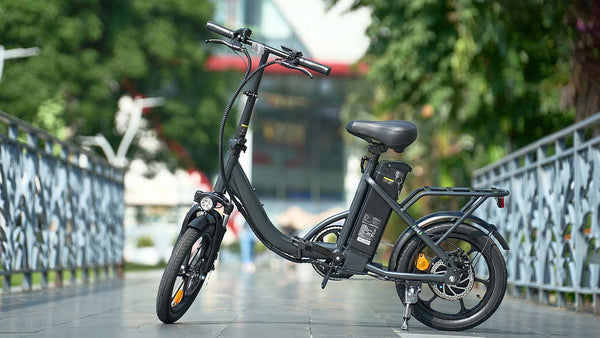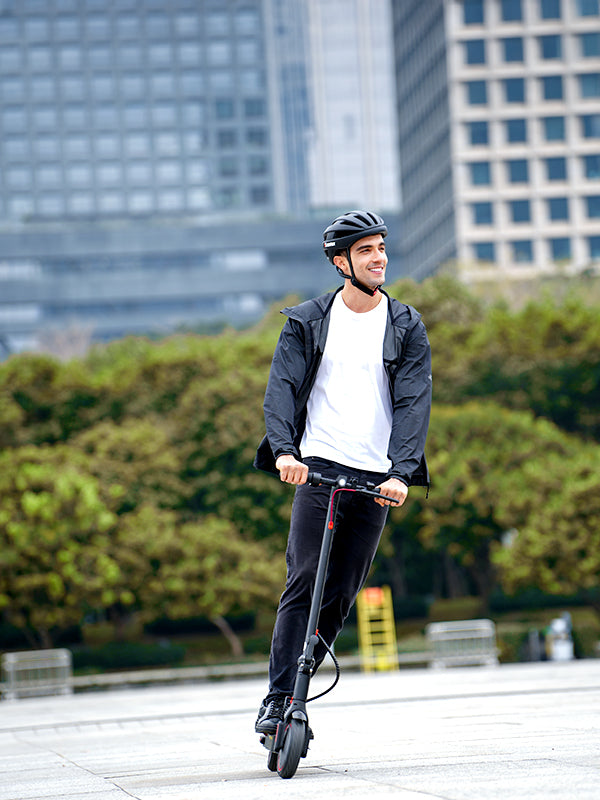
How to Charge an Electric Bike Safely and Effectively
Electric bikes are an increasingly popular way to commute, exercise, and explore, offering the perfect combination of pedal power and battery boost. However, to get the most out of your e-bike and ensure your safety, it’s crucial to know how to charge the battery correctly. Charging your e-bike the right way not only keeps the battery healthy and extends its lifespan but also prevents potential hazards such as overheating or fire. In this guide, we’ll walk you through everything you need to know to charge your electric bike safely and effectively.
Before You Charge Your Electric Bike Battery
Before plugging in your electric bike, follow these steps to ensure a safe and effective charge.
Use the Correct Charger
Always use the charger that came with your e-bike or an official replacement from the manufacturer. Using unbranded or cheap alternatives can damage your battery and pose serious safety risks.
Check Your Owner’s Manual
Charging procedures can vary depending on your e-bike’s make and model. Always consult the manual to follow the recommended steps and charging times.
Give Your New Battery a Full Initial Charge
For new electric bikes, give the battery a full charge before your first ride, typically around 24 hours. Even if it has some pre-charged power, a full charge ensures optimal battery performance.
Follow Safety Precautions
Avoid overloading electrical sockets, never charge while you’re asleep or away, and make sure smoke or heat detectors are installed nearby. These precautions help prevent accidents in case of a battery fault.
Maintain a Safe Storage Environment
Store and charge your e-bike in a moderate-temperature space. Avoid communal areas or locations near flammable materials. A safe environment helps preserve battery health and reduces risks.
How to Charge Your Electric Bike Battery Safely and Effectively
Charging your electric bike battery correctly is essential for safety, performance, and longevity. Follow these tips to ensure a smooth and secure charging process.
Charge Indoors for Optimal Performance
Always charge your e-bike indoors. Cold or outdoor environments can reduce battery efficiency and may shorten its lifespan. A controlled indoor space ensures consistent charging conditions.
Prevent Overheating
Never cover your battery or charger while charging. Proper ventilation prevents overheating, which can damage the battery and create safety risks.
Follow Fire Safety Precautions
Lithium-ion batteries can pose a fire risk if faulty or damaged. In case of a battery fire, evacuate immediately and call 999. Never attempt to put out a lithium-ion battery fire yourself.
Maintain Healthy Battery Levels
Avoid letting your battery drop below 25%. Recharging within 24 hours of use helps preserve battery health, keeping your e-bike ready for every ride.
Allow Post-Charge Cooling
After charging, let the battery sit for 10–15 minutes before refitting it to your bike. This cooling period reduces the risk of overheating and helps extend the battery’s lifespan.
How to Store Your Electric Bike Battery When Not in Use
Proper storage of your electric bike battery is essential to maintain its performance and extend its lifespan, especially if you won’t be using your bike for a while.
Remove the Battery for Long-Term Storage
For extended periods of inactivity, always remove the battery from your e-bike. This prevents unnecessary drainage and reduces the risk of damage while the bike is idle.
Check for Damage and Maintain Charge Levels
Inspect your battery at least once a month for any signs of wear, corrosion, or damage. Keep the battery charge above 60% during storage to protect its health and ensure it’s ready for use when needed.
Use Official Chargers Only
Always charge the battery with the official charger provided by the manufacturer. If your charger shows signs of wear or malfunction, replace it immediately with a manufacturer-approved unit to avoid safety risks.
How to Safely Dispose of an Old Electric Bike Battery
Proper disposal of old or damaged electric bike batteries is crucial for safety and environmental protection. Follow these guidelines to handle them correctly.
Never Throw Batteries in Household Waste
E-bike batteries should never be disposed of in regular trash or standard recycling bins. Doing so can harm the environment and pose a serious fire risk.
Use Manufacturer Recycling Programs or Local Guidance
Check if your e-bike manufacturer offers a recycling program for old batteries. If not, contact your local authority for proper disposal instructions to ensure safe and environmentally friendly handling.
Replace Damaged Batteries Immediately
Batteries that are damaged from crashes, drops, or wear can overheat and catch fire. Always replace damaged batteries promptly to maintain safety and prevent accidents.
How to Buy a New Electric Bike Battery
Buying a new electric bike battery requires careful attention to safety and authenticity. Follow these tips to protect yourself and your investment.
Purchase from Reputable Sellers
Only buy electric bike batteries and chargers from trusted retailers or the manufacturer. Counterfeit products can fail to meet safety standards and pose serious risks.
Choose Genuine Chargers and Batteries
Genuine batteries and chargers are designed to comply with safety regulations. While they may cost more, using authentic products reduces the risk of fire, damage, or battery failure.
Register Your Battery for Warranty and Recalls
Register your new battery with the manufacturer to validate your warranty. Registration also ensures you receive important safety updates or recall notifications if needed.
Check for Recalls
Regularly check Electrical Safety First or government websites to ensure your e-bike battery or charger is not subject to a recall. This simple step can prevent accidents and keep you safe.
Common Mistakes That Can Damage Your Electric Bike Battery
Protecting your electric bike battery is key to maintaining its performance and lifespan. Avoid these common mistakes to keep your battery healthy.
Don’t Fully Discharge the Battery
Lithium batteries do not have a “memory,” so it’s not necessary to run them to zero before recharging. Fully depleting the battery can permanently reduce its capacity. Aim to recharge before it drops below 25–30%.
Avoid Overcharging or Constant Topping Off
You don’t need to charge your battery after every ride. Overcharging or frequent short top-ups can gradually reduce the battery’s overall capacity. Plan your charging schedule according to your riding frequency.
Store Batteries at the Right Charge Level
If you won’t use your bike for weeks, store the battery at 30–60% charge in a dry, room-temperature space. This prevents deep discharge and keeps the battery stable for long-term storage.
Keep the Battery Away from Extreme Temperatures
Cold weather can reduce charging efficiency and even damage battery components if stored below freezing. Likewise, excessive heat can cause permanent damage or even trigger thermal runaway, which can lead to fire. Store your battery in a temperature-controlled environment whenever possible.
Check Battery Charge During Long Periods of Inactivity
If the bike is not in use for an extended period, check the battery monthly and partially recharge when it drops below 30%. This prevents deep discharge and prolongs battery life.
Conclusion
Charging your electric bike properly is key to maintaining performance, prolonging battery life, and staying safe on the road. By following manufacturer instructions, using the correct charger, and storing your battery responsibly, you can enjoy worry-free rides for years to come. Whether you’re a daily commuter or a weekend adventurer, these simple charging practices ensure your electric bike is always ready for the journey ahead.
FAQs
How Much Does It Cost to Charge an Electric Bike?
Charging an electric bike is very affordable. On average, it costs around 5–20p per full charge, depending on your battery size and local electricity rates. For most e-bikes, this is far cheaper than refueling a car, making them an economical and eco-friendly way to get around.
How Long Do Electric Bikes Take to Charge?
The charging time for an electric bike depends on the battery size and type of charger used. Most e-bike batteries take 3 to 8 hours for a full charge. Smaller batteries may charge faster, while high-capacity batteries can take longer, so it’s best to check your manufacturer’s guidelines for accurate timing.
Do Electric Bikes Charge While You Pedal?
Most electric bikes do not charge while you pedal. Pedaling helps the motor assist your ride, but it doesn’t generate electricity to recharge the battery. Some specialized e-bikes may feature regenerative braking or advanced systems that recover small amounts of energy, but this isn’t enough to fully charge the battery.
Can You Plug an Electric Bike into a Regular Outlet?
Yes, most electric bikes can be charged using a standard household outlet. Simply use the charger provided by the manufacturer and follow the recommended charging instructions. Avoid using cheap or incompatible chargers, as they can damage the battery and pose safety risks.
Should I Charge My Electric Bike After Every Ride?
It’s best to recharge your e-bike regularly rather than letting the battery run completely flat. You don’t need to charge after every short ride, but topping up the battery within 24 hours of use helps maintain battery health and ensures your e-bike is ready for your next journey.
Product Category
Recent Posts

How to Remove the Speed Limiter on Your Electric Bike: Step-by-Step Guide

How to Charge an Electric Bike Safely and Effectively

Are Electric Bikes Worth It? Benefits, Costs, and Everything You Need to Know

Best Electric Bikes Under £500 – Top Affordable iHoverboard Picks for Adults



























































Still, need help? Contact Us: support@ihoverboard.com
What's the option? Check out the option now!
Leave us a message